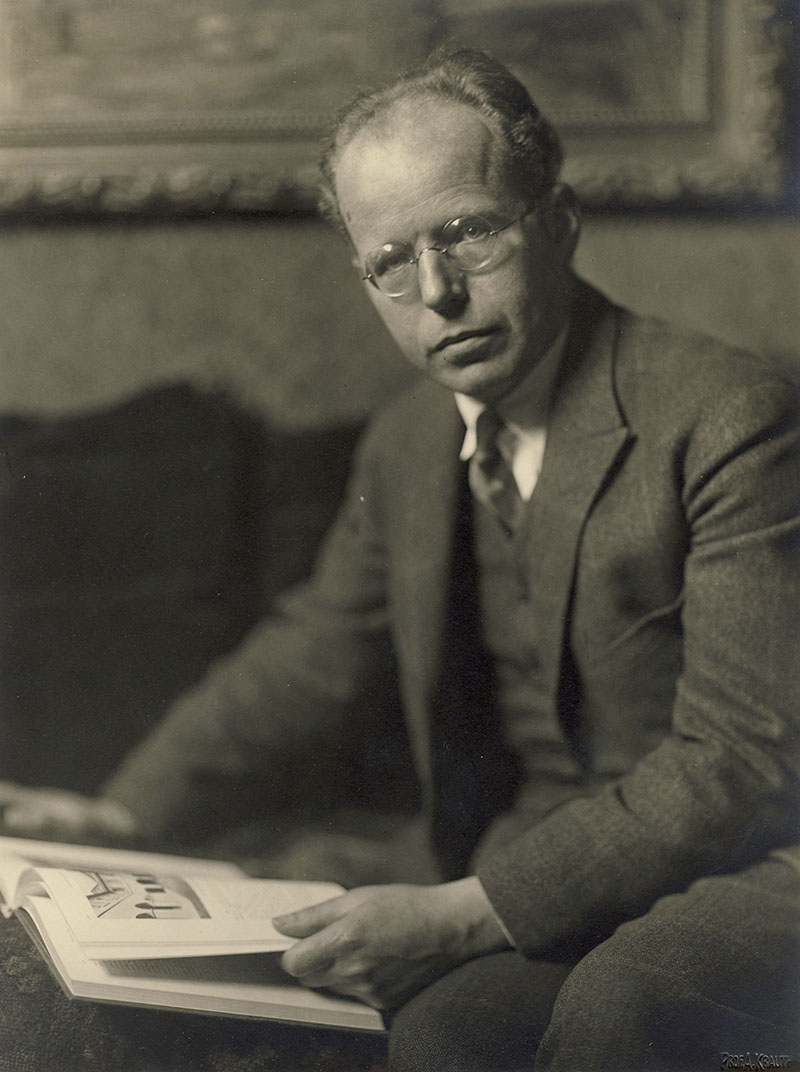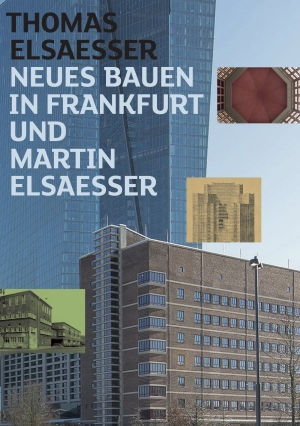
Martin Elsaesser in 1926. Photo Alfred Krauth © DFF and Martin Elsaesser Stiftung
The Martin Elsaesser Foundation is dedicated to the life and work of the architect, director of municipal building department and university professor Martin Elsaesser (1884–1957). Since 30 March 2009 a legal body under the German Civil Code, the Foundation is registered as a non-profit organisation under German tax law. In accordance with an arrangement between the European Central Bank, the City of Frankfurt am Main and Martin Elsaesser's family, the Martin Elsaesser Foundation is dedicated to the preservation of his artistic and architectural legacy.
The official seat of the Foundation is Frankfurt am Main, the city in which Elsaesser was employed as Director of Municipal Buildings Department between 1925 and 1932. Responsible for some of the key buildings in “New Frankfurt”, Elsaesser designed several schools, the university psychiatric clinic, a Protestant church, an indoor swimming pool and other public buildings, including the south wing of the Gesellschaftshaus Palmengarten (together with Ernst May and Werner Hebebrand). His masterpiece in Frankfurt is the Grossmarkthalle, which is now an integral part of the European Central Bank’s new premises.
From the outset, the Foundation’s main purpose has been to establish a collection dedicated to Elsaesser’s life and work, thereby enabling and promoting research, and making Elsaesser's way of thinking and work accessible to the public. Thus the Foundation was involved in the 2009 exhibition Martin Elsaesser und das Neue Frankfurt (Martin Elsaesser and New Frankfurt) at the Deutsches Architekturmuseum. It also organised the February 2010 international symposium on the life and times of Martin Elsaesser (Martin Elsaesser und seine Zeit(en)) in cooperation with the Kunstgeschichtliches Institut of the Goethe Universität in Frankfurt am Main. The Foundation's main priority continues to be exhibitions and publications. In addition to a comprehensive scientific, bilingual catalogue specially produced for the 2009 exhibition, the Foundation initiated the publication of a critical edition of lectures and essays by Martin Elsaesser. The book, entitled Martin Elsaesser: Schriften (Martin Elsaesser: Writings), was produced in cooperation with the Deutsches Institut für Stadtbaukunst Dortmund and published by the Niggli Verlag Zurich in 2014.
In June 2013 the Foundation organised a colloquium on Martin Elsaesser und der moderne Kirchenbau heute (Martin Elsaesser and Contemporary Church Buildings) in cooperation with the EKD-Institut für Kirchenbau Marburg. This took place in the Gustav-Adolf Church in Niederursel, Frankfurt, which Elsaesser designed. The contributions to the colloquium were published in 2014. In September of that year, an exhibition was held in Augsburg under the title of Weihestätten. Protestantischer Sakralbau und Moderne – der Architekt Martin Elsaesser in Schwaben 1906–1926 (Holy Places: Protestant Ecclesiastical Buildings and Modernism – Architect Martin Elsaesser in Swabia, 1906–1926), sponsored by the Architekturmuseum der Technischen Universität München and the Evangelische Landeskirche in Württemberg. At the same time, Wasmuth Verlag Tübingen published Die Kirchenbauten Martin Elsaessers (Church Buildings by Martin Elsaesser) by Elisabeth Spitzbart and Jörg Schilling, which served as the exhibition catalogue. The Foundation was also involved in the 2014 publication of a book of photographs entitled Das Neue Frankfurt (New Frankfurt) by Matthias Matzak. In collaboration with Schaff-Verlag Hamburg, the Foundation is publishing a series of academic booklets on Martin Elsaesser’s buildings, four of which have already appeared.
Alongside its work on Martin Elsaesser’s legacy, the Foundation wishes to contribute to the study of socially responsible architecture, in particular with a view to promoting the use of architecture in an environmentally and historically informed manner. For this and future projects, it relies on the support it receives through donations and endowments.
